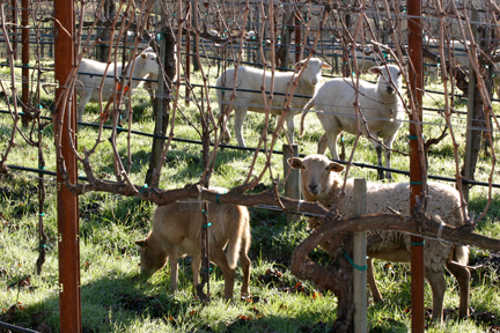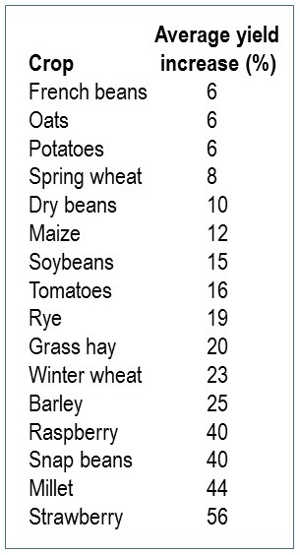
ALBANY, Calif. — Kelly Mulville has been running sheep in vineyards since 2005.
He first encountered holistic agricultural management techniques in Colorado. When he later visited California as part of a study program, he toured several vineyards and noticed no grazing of cover crops.
“It seemed like a lost economic opportunity,” he said.
By allowing sheep into the vineyard to graze on the cover crops throughout the growing season, he was able to eliminate the need for any mechanical cultivation, tillage, or mowing both between rows and under vines, as well as the need for hand suckering of the grape vine trunks.
The sheep’s grazing now performed these tasks, turning the unwanted vegetation into fertilizer almost instantly.
Less unwanted vegetation also meant less water consumed. Mulville found that on-site irrigation use decreased by more than 80 percent – a tremendous benefit in a region plagued by drought.
Perhaps most surprising, fruit yield increased by approximately 20 percent with no adverse impacts upon final product quality.
Farmers in the United States face the daunting challenge of meeting ever-increasing production demands under the growing uncertainties of dramatically changing weather conditions, climates and markets.
Agroforestry – the intentional integration of trees and shrubs into crop and livestock production systems – is one strategy that can enhance not only the resiliency, but also the productivity and profitability of agricultural operations and lands.
The USDA Forest Service has published a new report, “Agroforestry: Enhancing Resiliency in U.S. Agricultural Landscapes Under Changing Conditions” based upon a national scientific assessment of agroforestry.
With contributions from more than 50 experts from the United States, Canada, and Mexico, this report presents the first-ever synthesis on agroforestry as a mechanism for improving the resiliency of farm lands.
“This national report draws upon the most current science and shows how tree-based management strategies can improve agricultural production and resiliency, especially under increasingly changing environmental conditions,” said Forest Service Deputy Director of Research and Development Carlos Rodriguez. “It provides science-based information needed by farmers, decision-makers, and researchers to develop integrated agricultural strategies and production systems.”
“This report draws upon the most current science and shows how tree-based management strategies can improve agricultural production and resiliency, especially under increasingly changing environmental conditions,” said report co-author Gary Bentrup, a Forest Service research landscape planner with the USDA National Agroforestry Center.
Agroforestry practices like windbreaks and alley cropping, in which trees or shrubs are grown around or among crops, can reduce wind velocity, decrease erosion, and improve soil health.
Silvopasture, a technique similar to that which Mulville employs in his vineyard, combines trees with livestock and pasture, where the trees can be managed for timber or other tree crops while at the same time provide shade and shelter for livestock.
Riparian buffers – vegetated areas along streams and other water bodies – stabilize banks, reduce nutrient runoff, and provide shade that helps keep rising stream temperatures in check.
Forest farming, or the cultivation of high-value crops like ginseng or shitake mushrooms under a forest canopy, is another agroforestry tool used to diversify farm portfolios and provide economic stability for landowners.
These practices also support key nature-based benefits such as crop pollination, biological pest control, and habitat connectivity.
According to the report, well-designed agroforestry systems increase per-land-unit area productivity and can increase crop yields as much as 56 percent (see chart).
Overall, Mulville calculates that he has saved at least $450 per acre per year through these practices. He estimates that if he were to create a breeding flock to raise and sell the sheep, total savings could be up to $1,000 per acre.
Agroforestry offers options that help farmers, ranchers, and communities balance the needs of meeting production goals in ways that both maintain future productivity as well as build the long-term resiliency that will be needed to tackle future weather and climate impacts.
Not only do these practices bolster agriculture sustainability and landscape health, but they also help farmers hedge their bets against future challenges.
“This creates an opportunity for two operations – a vineyard and livestock – on the same land,” he explained. “I hope that larger vineyards will adopt these practices. The savings will be even greater.”
To read the full Agroforestry: Enhancing Resiliency in U.S. Agricultural Landscapes Under Changing Conditions report, visit https://doi.org/10.2737/WO-GTR-96.


 How to resolve AdBlock issue?
How to resolve AdBlock issue? 



